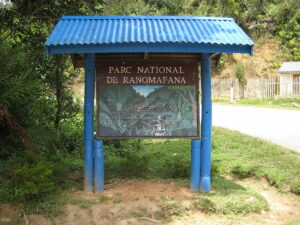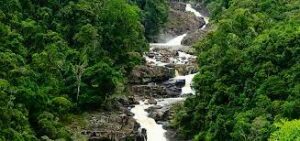-
Contact emailmamy_rakoto2000@yahoo.fr
- Bookmark
- Claim National Park

- Profile
- Tour Operators
- Accommodation
- prev
- next
Overview
Ranomafana (which means “hot water” in Malagasy) is doubtless one the most spectacular National Parks of Madagascar. Due to the good access and suitable location near the RN7, great biodiversity (12 lemur species are found here) and developed infrastructures, it has become one of the most visited places of the island. Established in 1991, it expands over a mountainous terrain of 415 km² totally covered by dense moist primary and secondary forest area at altitudes between 800m and 1.200m. In 1986 the critically endangered golden bamboo lemur was discovered here by Dr. Patricia Wright, a fact that definitely pushed the government to create a national park.
The park contains twelve lemur species. Aside from the golden bamboo lemur, visitors can spot eastern woolly lemur, red bellied lemur, eastern grey bamboo lemur, greater bamboo lemur, red-fronted brown lemur, black-and-white ruffed lemur, Milne-Edward´s sifaka, Small-toothed sportive lemur, greater dwarf lemur and brown mouse lemur and the very rare aye-aye. Other mammals include 7 species of tenrecs, 8 bats and 6 carnivorous, like the Malagasy striped civet and some mongooses.
Location
-
1, Ambatolampy, Vakinankaratra, Madagascar
Vital Park Information
Madagascar
416 km²
water is not safe to drink in Madagascar, always drink bottled water or carbonated drinks. When drinking bottled water, check to be sure the seal is not broken on the cap.
Malagasy ariary
April, May, June, July, August, September, October, November, December
Like most of eastern Madagascar, Ranomafana National Park is warm and humid all year round. Even in the dry season (April to December) rain falls on an almost daily basis; however, the rains are lighter and shorter during this time.




